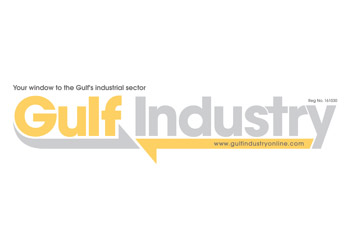
 Alba’s billets sales to the US enjoyed ‘the highest profitability’
Alba’s billets sales to the US enjoyed ‘the highest profitability’
Alba’s focus over the past five years on value-added products is paying off as the premiums in the sector remain high and the trend is likely to continue in the New Year, said its chief marketing officer Jean Baptiste Lucas.
Value-added products comprised around 66 per cent of Alba’s total output as of Q3 2014.
Meanwhile, Alba continues to make progress on the Line 6 expansion project and hopes to get all necessary board and government approvals in 2015. Line 6 will add approximately 400,000 tonnes to Alba’s current annual capacity of 913,000 tonnes.
Lucas said Alba is planning to deliver most of the new metal to Bahrain’s downstream. “We’re assuming that the majority of the additional liquid metal will be sold locally to existing and new customers,” he said.
In 2007-2009, Alba was completely re-organised and re-structured with one of the outcomes of the new strategy being a focus on value-added products. Lucas did not quantify the increase in revenues emanating from this switch over the years. “The benefit of value-added products is significant to Alba’s bottom line. In terms of percentages, we were at 40 per cent of total sales in 2009 as compared to 66 per cent to date, which is more than a 50 per cent increase,” he stated.
 |
|
Lucas: value addition now at the maximum possible |
The company makes three families of value-added products – billets, foundry alloys and rolling slabs.
“For the first nine months of 2014, the highest profitability came from billets sold to USA,” said Lucas. “Exports of this product there accounted for about 5 per cent of Alba sales with the remainder of overseas exports going to Europe and Asia.”
The official also said the segment breakdown could change from time to time. Most Alba foundry alloys are now shipped to Europe while earlier the US imported the biggest volume. The slab family of value-added products went to just one customer – Gulf Aluminium Rolling Mills (Garmco) in Bahrain.
Alba has two casthouses and to stay competitive it has in place a training and development programme which aims to deliver the right level of expertise and skills. “We ensure that young engineers are given the opportunity to attend conferences or classes. We also organise technical workshops with suppliers for the transfer of skills and knowledge. We also ensure that we have close cooperation with our customers and we have a group which is specifically in charge of customer support and metallurgy,” said Lucas.
The creation of new products is triggered often by customers who suggest that Alba develop a product of specific alloys or sizes. “We assess the cost benefits of the requested products and then we decide. This is essentially customer-driven. In the last two years, we have developed a portfolio of foundry alloys for our customers,” said Lucas.
 |
|
A casthouse furnace at Alba |
Four years ago, Alba had only five customers for foundry alloys, the number has since grown to 15. With value-added products being a good source for revenues, the only restraining factor towards greater production of that segment is production capacity. “At the end of the day, we have only a given capacity and we need to make sure we are supplying our loyal downstream customers in Bahrain,” said Lucas.
“Currently we’re manufacturing at a level of 66 to 67 per cent in value-added products and this is the maximum we can achieve.”
The segment’s popularity lies primarily in the fact that customers can receive products of the exact specifications they desire. While manufacturing involves the use of alloys from silicon, magnesium and manganese or any other alloy the customer may want, there are different casting processes and equipment, for example, in the case of billets and slabs. In the production process, billets are subjected to homogenisation, restoration and quenching. Billets and slabs undergo sowing to the final dimensions.
Lucas said while there was much work and expertise involved, the ultimate returns were good, the reason why the trend towards adding value had gained momentum. In the Gulf, all smelters could be described as strong value-added players with the exception of Sohar Aluminium.







